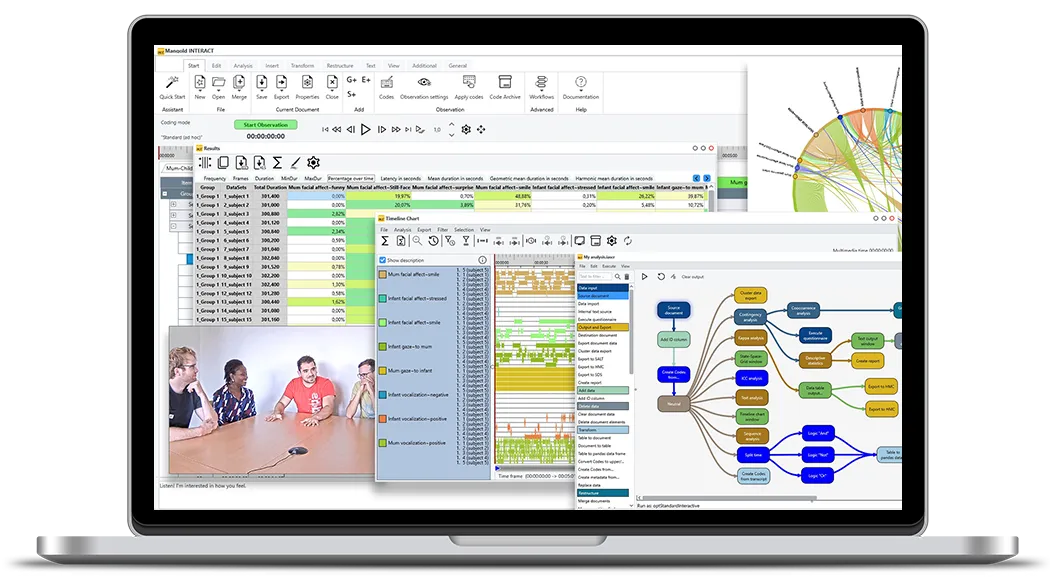Research · 6 min read
Joint Engagement in Sibling Interactions Including a Child with ASD
Research study examining joint engagement patterns between children with ASD and their siblings versus mothers, using Mangold INTERACT for detailed video frame-by-frame analysis.
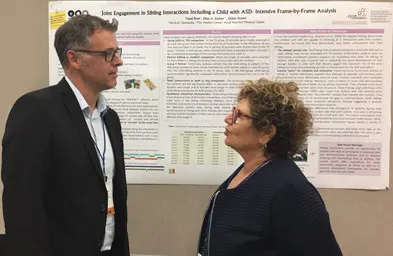
Video frame-by-frame analysis from Yonat Rum, Ditza A. Zachor and Esther Dromi about sibling interactions, presented at SRCD.
The Study was supported by using Mangold INTERACT , the professional software for qualitative and quantitative video-based observational research.
The goal was to characterize JE episodes among children with ASD versus TD children while interacting with an older sibling, in comparison to interaction with their mother.
Methods and Materials
Participants:
20 Israeli Jewish children, with their siblings and mothers
n = 10 children with ASD (5-9 years, boys, high/moderately functioning)
and their 10 older TD siblings (8-12 years, 2 boys & 8 girls) and their 10 mothers
- n = 10 TD children (4-8 years, boys)
and their 10 older TD siblings (5.5-10 years, 4 boys & 6 girls) and their 10 mothers

Data Collection:
Each child was video-recorded at home in six social interactions:
three play tasks performed with each of two partners (older sibling/mother):
- a collaborative construction game
- reading a children’s book
- playing with a familiar toy
The order of tasks and partners was counterbalanced, with each interaction lasting about 30 minutes (~10 min. per task).
Analysis:
Video recordings were systematically analyzed utilizing the “INTERACT” software, which was especially designed to carefully code each category of interest frame-by-frame.
In the first step of analysis, we coded on-task and off-task behaviors for each dyad member throughout the video recording. Figures 1 and 2 illustrate these behavior patterns for one ASD family’s child-mother and child-sibling interactions, respectively. Output from INTERACT enabled detection of each partner’s percentage of on-task and off-task time during the interaction and also the two partners’ extent of on-task and off-task synchronization during interaction. Coding of both partners as “on-task” at the same time indicated a JE episode.
In the second step of analysis, coders inserted qualitative remarks along the interaction to capture: (1) JE episodes’ quality, for example episodes occurring while both partners were coded “off-task” at the same time; and (2) various interaction characteristics such as eye contact, physical touch, reciprocity, mediation and construction, initiations, and dominancy of each partner.

Figure 1
On-task and off-task behavior by mother and by child with ASD over their 3-task interaction in Family 5.

Figure 2
On-task and off-task behavior by sibling and by child with ASD over their 3-task interaction in Family 5.
Results
Some analyses are ongoing; therefore, this section reports emerging data trends:
- Group (ASD vs. TD) comparison: In the TD group, JE episodes were reliably observed in all child-sibling and child-mother interactions for all three tasks. In the ASD group, JE was also demonstrated in all dyads, but in general JE episodes were shorter than in the TD group. Children in both groups were involved with tasks presented to them (“on-task”) for a substantial percentage of time during interactions (see Table 1).
- Partner (sibling vs. mother) comparison: More and longer JE episodes were recorded for ASD children in sibling interactions than in interactions with the mothers.
- Group X Partner: Preliminary analyses indicate that the child-sibling JE patterns in the ASD group seemed to more closely resemble the child-mother patterns in the TD group than the child-sibling patterns in the TD group. Also, in the ASD group, child-sibling synchronization significantly surpassed child-mother synchronization but not in the TD group.
- Tasks’ (construction vs. book vs. toy) comparison: The construction game and familiar toy contexts did not significantly differ. In the book reading context, total interaction duration was longer and JE episodes were longer in child-mother interactions than in child-sibling interactions for both groups (TD, ASD).
- Qualitative interaction characteristics: Child-sibling interactions were characterized as more reciprocal than child-mother interactions, and children with ASD tended to initiate more turns in the sibling interaction. Mothers, more than siblings, demonstrated mediation and construction behaviors during interaction with the child and tended to be the dominant partner. Also, during book reading activity, siblings tended to spontaneously sit facing each other thereby best supporting eye contact (see Image 1), whereas mothers tended to initiate side-by-side seating thereby best supporting physical affection (see Image 2).
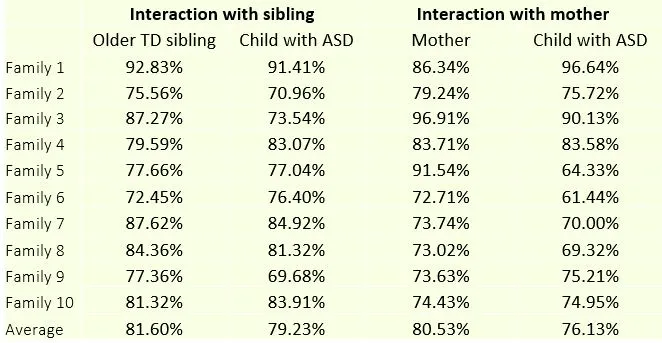
Table 1: Each Partner’s Percentage of Interaction Coded “On-Task” in ASD Group.
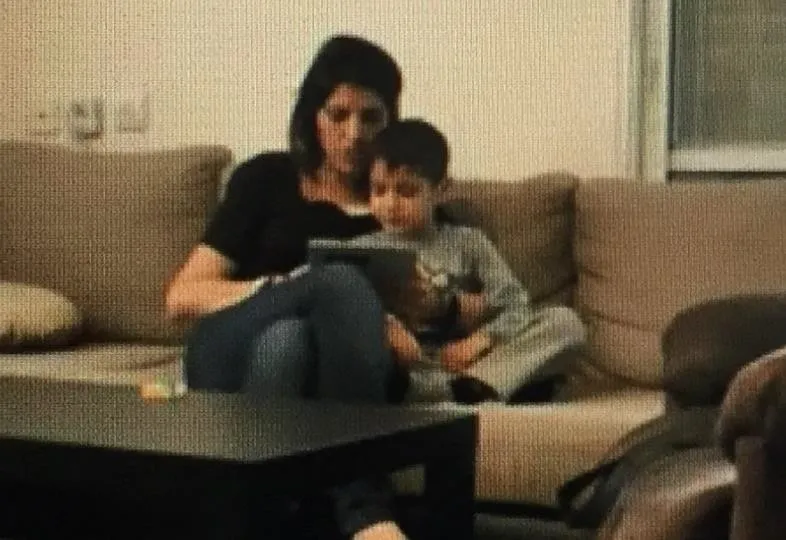
Image 1: Mother-initiated side-by-side book reading position conducive to affectionate touch in Family 9
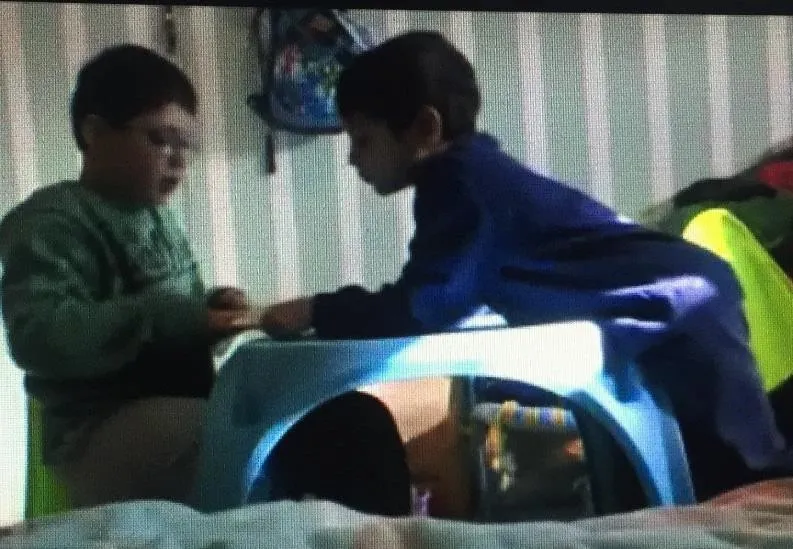
Image 2: Siblings’ spontaneous face-to-face book reading position conducive to eye contact in Family 9.
Main Points for Discussion
In line with previous studies (e.g., Adamson et al., 2009), the present findings demonstrate that children with ASD are capable of achieving JE in interactions with their mothers. Furthermore, we found that they demonstrate even better achievement with older siblings.
- The sibling’s special role: The finding that JE patterns between a child with ASD and an older sibling more closely resembled the TD families’ child-mother patterns than the child-sibling counterpart patterns supports our hypothesis that older TD siblings of children with ASD play a special role in impacting the social development of their younger brother or sister with ASD. Results suggest the important role of the older sibling as a social skill-promoting partner in interventions for the ASD population.
- Leaving “space” for initiation and reciprocity: Frame-by-frame hierarchical analysis of sibling vs. mother interactions revealed that although JE episodes with mothers were characterized by more affectionate physical touch, mothers revealed more mediation and construction than siblings. Moreover, some incidents of social skills demonstrated by children with ASD were better during sibling interaction: They initiated more social action, and the interactions were more reciprocal. These findings align with those of El-Ghoroury and Romanczyk (1999), who noted that children with ASD directed more verbal initiations towards their “less-effortful” siblings than towards their parents. They suggested that parents try to compensate for gaps in communication, while siblings allow a less didactic, more reciprocal interaction, thereby suggesting a possible direction for future parental intervention research.
- Multiple social partners: The differences that emerged in JE patterns during book reading activity emphasize the unique roles that each partner may play in enhancing the social and communicative skills of a child with ASD. This notion corresponds with the polytropic view of attachment presented by the social network model (Lewis, 2005), which proposes that multiple simultaneous attachment figures satisfy a variety of different needs in the child.
Despite the relatively small sample of participating families, this study sheds light on the neglected research topic of siblings’ interaction when one child has ASD. This work is part of a larger ongoing study, and more data is currently being collected and analyzed.
INTERACT: One Software for Your Entire Observational Research Workflow
From audio/video-based content-coding and transcription to analysis - INTERACT has you covered.
